Drum Saturation Techniques with Fabfilter Saturn
Let’s take a look at processing a drum bus using a distortion plugin, to turn this clean drum loop…
… into something with much more attitude, like this:
Step 1
Begin by grouping your drums together and sending them to a drum bus. In our loop, we have a simple four-to-the-floor kick and clap pattern with some hi-hats and percs. Next, load an instance of Fabfilter Saturn on your drum bus channel.
Fabfilter Saturn is capable of multi-band processing, which makes it perfect for bus processing as we can target specific frequency bands of our signal. Let’s begin by setting our frequency bands. If you click in the top half of the plugin you should see a + icon appear and a frequency crossover point will be created. We’ll set four frequency bands for this walkthrough. Once the bands are created, you can click and drag on the lines to set the crossover frequency for each band. Set the first band to 262 Hz, the second to 558 Hz and the third to 5056 Hz. The drum loop will still sound the same, as we’ve not added any distortion to any frequency bands yet.
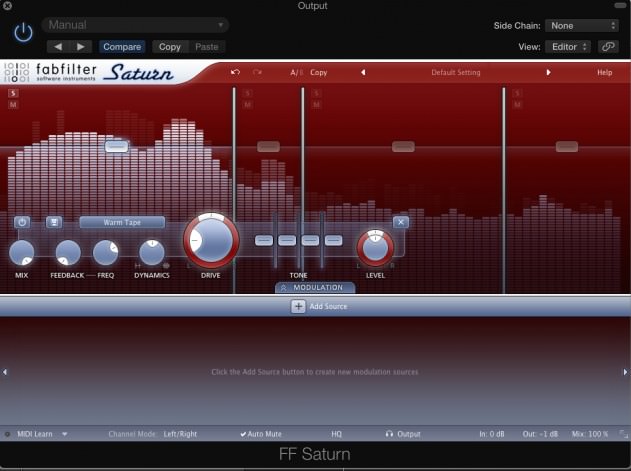
Step 2
The way we’ve set up our crossover frequencies, the first band will be dealing mostly with the kick drum, the second the percussion, the third the clap/snare and the fourth hi-hats. This will always depend on the frequency content of the drums you’re processing, so be sure to listen and experiment. The solo and mute buttons in the top left corner of each frequency band can help when trying to isolate frequencies.
Click on the first band to bring up its controls. Turning up the Drive control will introduce the distortion. We’re going for an obviously driven kick drum sound, so we take this right up to 73%. The saturation on the low end of the kick sounds good, but we may be losing some of the sub from the sound. Use the mix control on the left to dial back in some of the unprocessed signal. We’ve also taken up the level of the first band by 2.96 dB to add more weight to the low end of the loop.
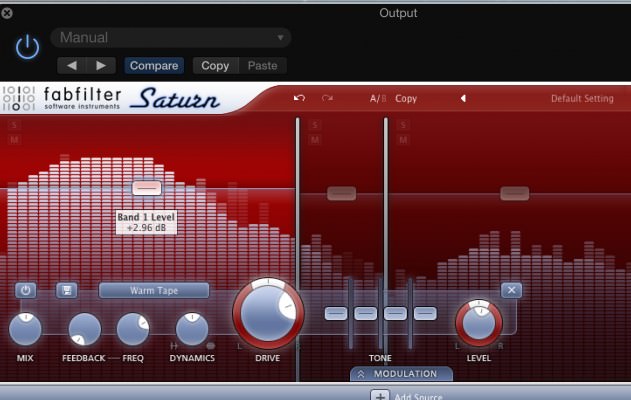
Step 3
Now click on the second band, which is mostly where our percussion hits are sounding. Again take the Drive up to around 73%, but this time click the drop-down menu where it says Warm Tape and change the distortion algorithm to Heavy Saturation, which drives the band quite heavily.
Next to the Drive control is a Dynamics control. Turning this clockwise applies compression, while anticlockwise applies a gating effect. We’ll take this fully anticlockwise to clean up sustain portion of this band, which had become slightly overbearing due to the heavy saturation effect we applied. We’ve also increased the level of this band by 5.42 dB. Here’s how this band sounds soloed:
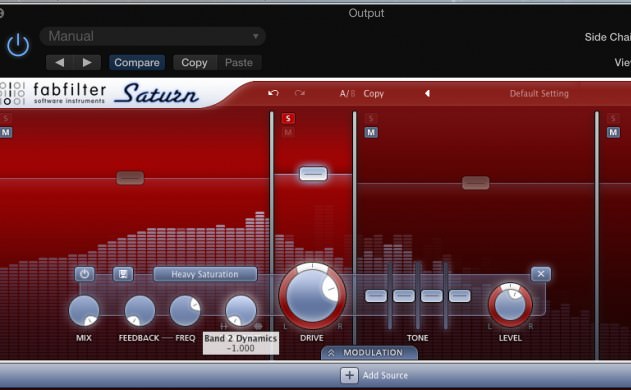
Step 4
One of the other advantages of multi-band processing is we can leave frequency bands of our signal unprocessed if we wish. In our case, we’ve chosen to leave the third frequency band unprocessed. This band mostly contains the clap and the transient from the kick. You can turn bands on and off using the power buttons to the top left of each band’s controls.
Next, click on the fourth band, which is mostly hi-hats and the top end of our clap. Take the Drive up to 80%, and also dial the mix down to 65%. We’ll boost the top end of the band using the Band 4 Presence control. Take this to about +2.6dB.
The final thing we do is tweak the master output control for Saturn, so our processed signal peaks at the same level as the original. In our final audio clip, you can hear the difference between the processed and unprocessed sounds, with the bypass button hit half way through the clip.
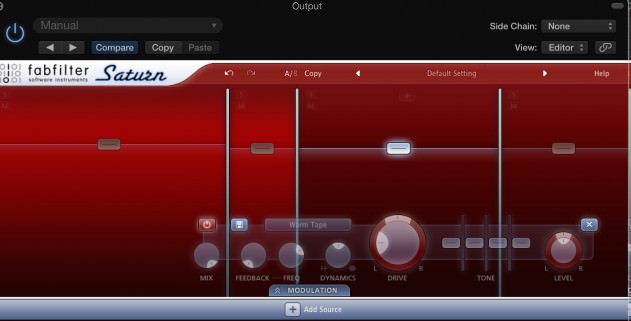
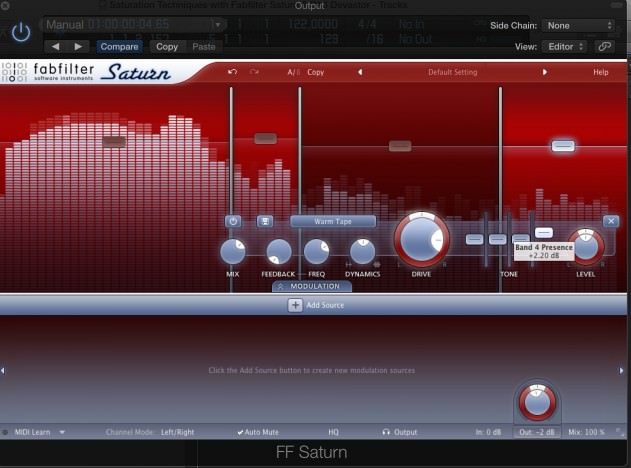
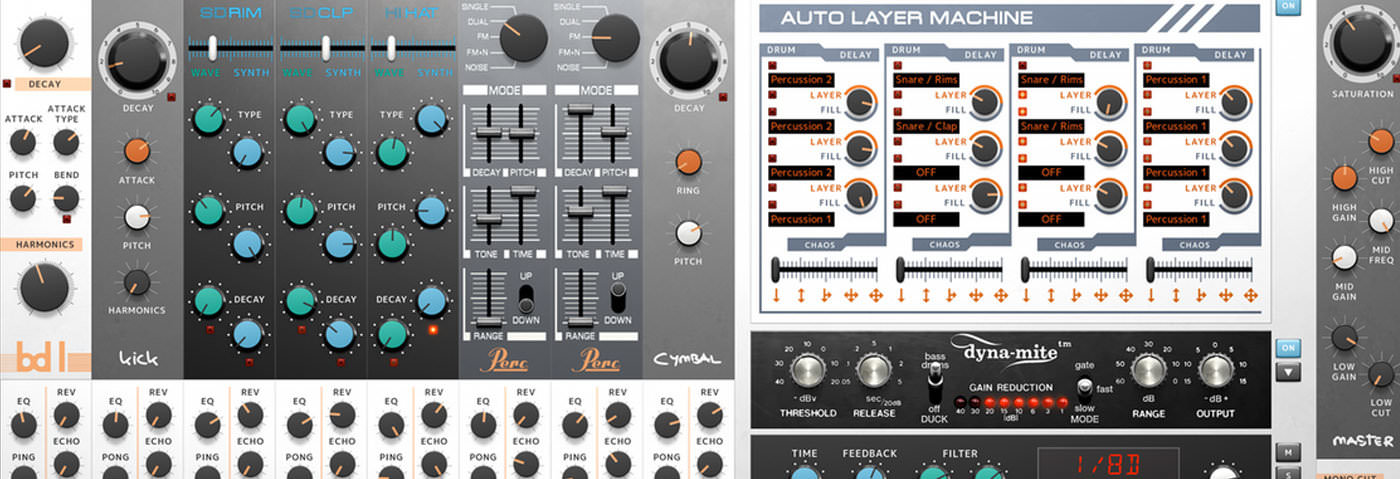
12.37 AM
Christmas just arrives for me ! Thanks a lot for all this tutorials !
01.51 AM
10 essential drum techniques??? 10 tutorials on how to do this or that using very particular DAWS and Plugins. Total waste of time.
02.52 AM
I do like Attack and despite me mainly being into underground hip hop I play disco and some nu disco (which is house haha) and still love techno as in the minimalist Detroit sound, not bloody tech house. I DJ and come from a great position clubwise. Growing up in South London in the 80’s there was the soul scene then the warehouse, hip-hop, funk, Boogie, disco anthems, Kiss FM when it was a pirate was our Bible and on a Tuesday night there were prob 5 good clubs to go to, on a Saturday, 25 maybe. who knows. Then I lived and loved through 88- to about 93 when the original Balearic, anything went, all about the tunes was starting to go slowly and it was about the DJs and had split into 1000 genres. Boys Own, Slam, and others still kept a more undergrounf scene going away from momeymakers like MOS. (only time I went there I lost my mates within about 20 mins and looked in vain for a few hours. That wasn’t what it was about. I was in Brighton then anyway and we had the wonderful Zap. Now what we got? A weekly decent hip hop night on a Tuesday, once a month clubs like Russ Dewbury’s terrific Soulful Strut where I do the odd slot.. All the sefront clubs which were once cool are now for the geezer and hen night crowd.Then there’s patterns. If there is a decent DJ it;s worth it. If not it;s the usual kid playing his perfect and completely broring seamless tech house set. The crowd don’t actuyally seem like they are having a particularly great time and most people in their 20’s just go to the pub and I’m not surprised. Your ‘What makes a great DJ’ was terrific as it so backed up what had happened. Itl;s turned on it’s head so instead of buying tunes as u knew they would be bangers I can tell that tracks are downloaded ‘cos they fit in with other tracks, I call it anti-DJing and it’s nice to see Attack interview some of the greats like Derrick May etc. You would think that the kids who think they are DJs now (despite there not being many places to DJ) would respect people like that. Indie kids in bands worship those who went before but no…they think they know best, they DJs who shock horror mixed with vinyl and would drop lots of banging tunes on the One as we punters couldn’t have cared less about the mixing really. It was all about the tunes, Depressing really. Good that the drum and bass scene and a few others have kept going by not becoming commercial. Sad thing is in Brighton there are loads of us that want to put proper small nights on with little risk like u used to be able to but there’s no where to hire out now.
Anyway I think all that was saying that you seem to be taking a more mature approach instead of articles like one I saw online which was “Is it possible to mix without using your EQ?” I just stared at it tbh in horror. The only time I tounch my EQ is when I turn the bass down for scratching. Oh couple of requests. How about a few more Beat Dissected on hip hop. The Underground has all kinds of leftfield beats and talented producers, and more minimalist techno. We of a certain age could make a house beat in our sleep. And can you please not make your tutorials so expensive plugin specific? We donl;t all use or can afford Ableton, Pro Tools, etc. I use Reaper, MPC Element and the best free plugins and synths that I have found. I’m sure Variety of Sound and Tokyo Dawn plugins could give a lot of commerial ones a run for their money. And making hip hop TyrellN6, Firebird and SQ8L certainly do the job. The only plugins I’be bought are the DopeVST Hip Hop romplers. And how about some tips on leftfield hip hop? Do people really still actually make ‘House Leads?’ I have about 50 in various presets that sound alright. Andy
08.19 PM
Thanks for all these tips, great article!
11.43 AM
This seems to be an advert for various (expensive) plugins rather than a tutorial on essential drum techniques. This should have been done using a DAW’s native plugins.